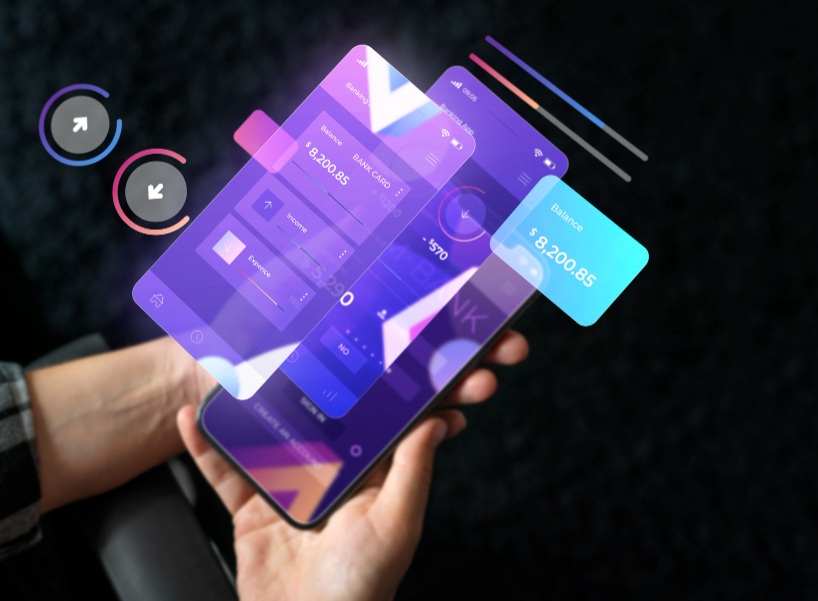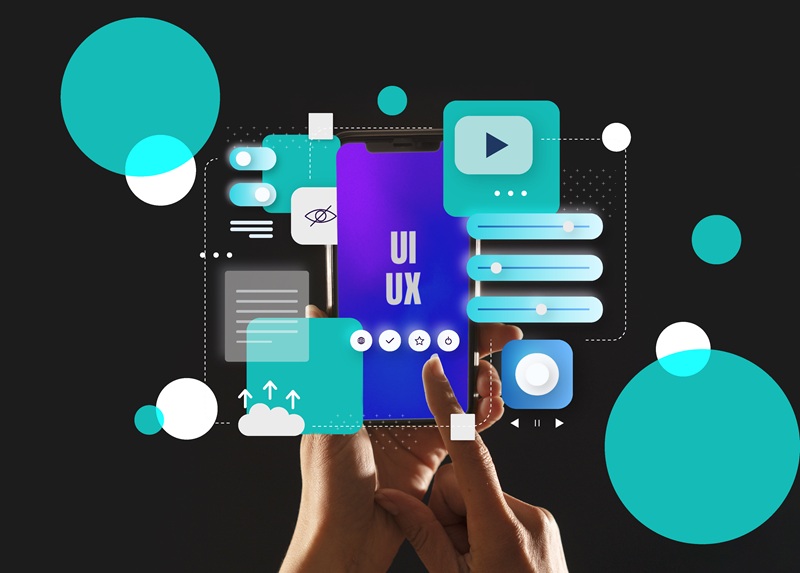Why UX/UI Matters in eCommerce Web Development: Designing for Conversions
The digital marketplace has transformed the way people shop. With a few clicks or taps, consumers can compare products, read reviews, and complete transactions without ever stepping foot in a physical store. But in this convenience-driven economy, one factor determines whether a shopper stays on your site or abandons it for a competitor: user experience (UX) and user interface (UI) design.
At the heart of every successful online store lies a strong foundation of eCommerce Web Development. While the back end ensures smooth operations such as payment processing, product management, and security, it is the front end he design, flow, and feel that influences customer decisions. A site that looks professional, loads quickly, and guides visitors seamlessly through their journey builds trust and drives conversions. Conversely, a poorly designed site leads to frustration, cart abandonment, and lost revenue.
This comprehensive guide explores why UX/UI design is the driving force behind successful eCommerce Web Development, the specific principles that boost sales, and how businesses can stay ahead of evolving consumer expectations.
The Role of UX/UI in eCommerce Web Development Success
Every interaction your customers have with your website tells a story about your brand. UX focuses on usability, navigation, and functionality, while UI emphasizes visual appeal, color schemes, and typography. Together, they determine whether your online store feels intuitive or confusing.
Why this matters in eCommerce Web Development:
- First impressions shape trust: A clutter-free, attractive homepage instantly signals credibility. Customers are more likely to trust a site that looks polished and professional.
- Smooth navigation fosters conversions: Clear menus, visible categories, and well-structured product pages make shopping enjoyable and quick. When customers find what they want easily, they are more likely to complete a purchase.
- Visual consistency strengthens branding: Cohesive colors, typography, and design layouts reinforce your brand identity and build recognition across channels.
- Friction-free processes improve retention: From browsing to checkout, every step should feel effortless. The fewer clicks it takes to buy, the higher the conversion rate.
In essence, UX/UI design transforms eCommerce Web Development from a technical exercise into a revenue-generating strategy.

Designing for Conversions: Core UX/UI Principles
1. Simplicity and Clarity
A great online shopping experience doesn’t overwhelm customers it guides them. Simplicity in design means cutting out unnecessary distractions and allowing users to focus on what matters: the products.
- Minimalist layouts: Clean product grids and whitespace help users absorb information without confusion.
- Clear call-to-actions (CTAs): Buttons like “Add to Cart” or “Buy Now” must stand out visually and be strategically placed across product and landing pages.
- Logical categorization: Organizing products under intuitive categories ensures visitors don’t waste time searching.
In eCommerce Web Development, simplicity directly translates into usability. Customers don’t want to “learn” how to use your site; they want an effortless path to purchase. A complicated design creates friction, while a clear interface drives results.
2. Mobile-First Experience
Over 60% of global eCommerce sales now occur on smartphones. This makes mobile optimization not just an option but a priority. A mobile-first approach to eCommerce Web Development ensures your site adapts perfectly to smaller screens while delivering the same quality experience as desktop.
- Responsive design: Websites must automatically resize for all devices, whether it’s a phone, tablet, or desktop.
- Touch-friendly navigation: Large, clickable buttons, thumb-friendly menus, and simplified input fields reduce frustration.
- Fast loading speeds: Mobile shoppers abandon slow sites. Every second of delay can significantly reduce conversions.
When mobile-first development is integrated with UX/UI design, customers can shop anytime, anywhere, without limitations. This directly boosts conversion rates and keeps your store competitive.
3. Compelling Product Presentation
Online shopping lacks the “touch and feel” of physical retail. That’s why eCommerce Web Development must compensate by creating immersive product experiences.
- High-quality images and videos: Multiple angles, 360-degree views, and product demonstration videos help customers visualize purchases.
- Zoom functionality: The ability to inspect product details mimics the in-store experience.
- Detailed product descriptions: Copy should highlight features, benefits, dimensions, and usage.
- Customer reviews and testimonials: Social proof builds credibility and helps hesitant buyers make confident decisions.
By combining rich visuals with strong storytelling, your products do more than sit on a page; they engage and persuade.
4. Checkout Optimization
Cart abandonment remains one of the biggest challenges in eCommerce. Nearly 70% of shoppers abandon their carts, often due to complicated or time-consuming checkout processes. Streamlined design during eCommerce Web Development directly addresses this issue.
- Guest checkout: Forcing account creation drives users away. Offering a guest option reduces friction.
- Multiple payment methods: Customers expect credit cards, PayPal, Apple Pay, Google Wallet, and even buy-now-pay-later options.
- Progress indicators: A simple bar that shows checkout progress reassures customers they are almost done.
- Auto-fill capabilities: Pre-filled shipping or billing information speeds up the process and prevents drop-offs.
A smooth, one-page checkout is often the difference between a lost sale and a loyal customer.
5. Accessibility and Inclusivity
The internet is for everyone, and so is your store. Accessibility is now a core element of eCommerce Web Development, not an afterthought.
- Alt-text for images: This ensures visually impaired users can understand product visuals through screen readers.
- Readable fonts and color contrasts: Proper contrast ratios make text easy to read for users with vision impairments.
- Voice-enabled search: Allows users with disabilities or those multitasking to navigate effortlessly.
Designing inclusively doesn’t just expand your audience; it positions your brand as socially responsible and customer-centric.

Storytelling Through UX/UI
Think of UX/UI design as the scriptwriter and director of a film. A movie draws the audience into a story, and your website should do the same.
- The opening scene (homepage): Captivates visitors with engaging visuals and clear navigation.
- The plot (browsing): Smooth product discovery keeps customers engaged and interested.
- The climax (checkout): A hassle-free, rewarding conclusion to the shopping journey.
Poor UX/UI is like a movie with missing scenes or weak storytelling; it leaves viewers unsatisfied. Strong eCommerce Web Development ensures the story is cohesive, engaging, and memorable.
Business Benefits of Strong UX/UI in eCommerce
Investing in UX/UI design within eCommerce Web Development isn’t just about aesthetics; it delivers measurable business results.
- Higher conversions: Clear design nudges visitors toward purchasing.
- Lower bounce rates: Engaging layouts and easy navigation keep users exploring longer.
- Increased loyalty: Positive shopping experiences encourage repeat business.
- Better brand reputation: Customers perceive professional design as a reflection of quality and reliability.
- SEO advantages: Search engines reward user-friendly, mobile-optimized websites with higher rankings.
A well-designed store doesn’t just sell products; it builds a sustainable brand.
Future Trends in UX/UI for eCommerce
As technology evolves, so do consumer expectations. Staying competitive means anticipating these shifts in eCommerce Web Development:
- AI-driven personalization: AI analyzes browsing history to recommend tailored products.
- Voice commerce: Integration with Alexa, Siri, or Google Assistant allows hands-free shopping.
- AR/VR experiences: Virtual “try-ons” or room previews let customers see products in real contexts.
- Micro-interactions: Small animations, hover effects, or visual cues that make the shopping journey more engaging.
- Sustainability-driven design: Highlighting eco-friendly products or practices to appeal to conscious consumers.
Brands that embrace these innovations now will be better prepared for the future.
Crafting Digital Stores That Customers Love and Trust
In today’s digital-first economy, eCommerce Web Development goes beyond building a functioning store, it’s about crafting experiences that delight customers and drive conversions. From simple layouts and mobile-first design to checkout optimization and inclusivity, every detail of UX/UI influences whether a visitor becomes a buyer.
If your business is ready to transform its online presence, trust experts who blend design with strategy. Partner with Launchkit Marketing for cutting-edge eCommerce Web Development solutions that convert browsers into loyal customers. Call us today at (425) 293 2902 to start building an online store designed for success.

